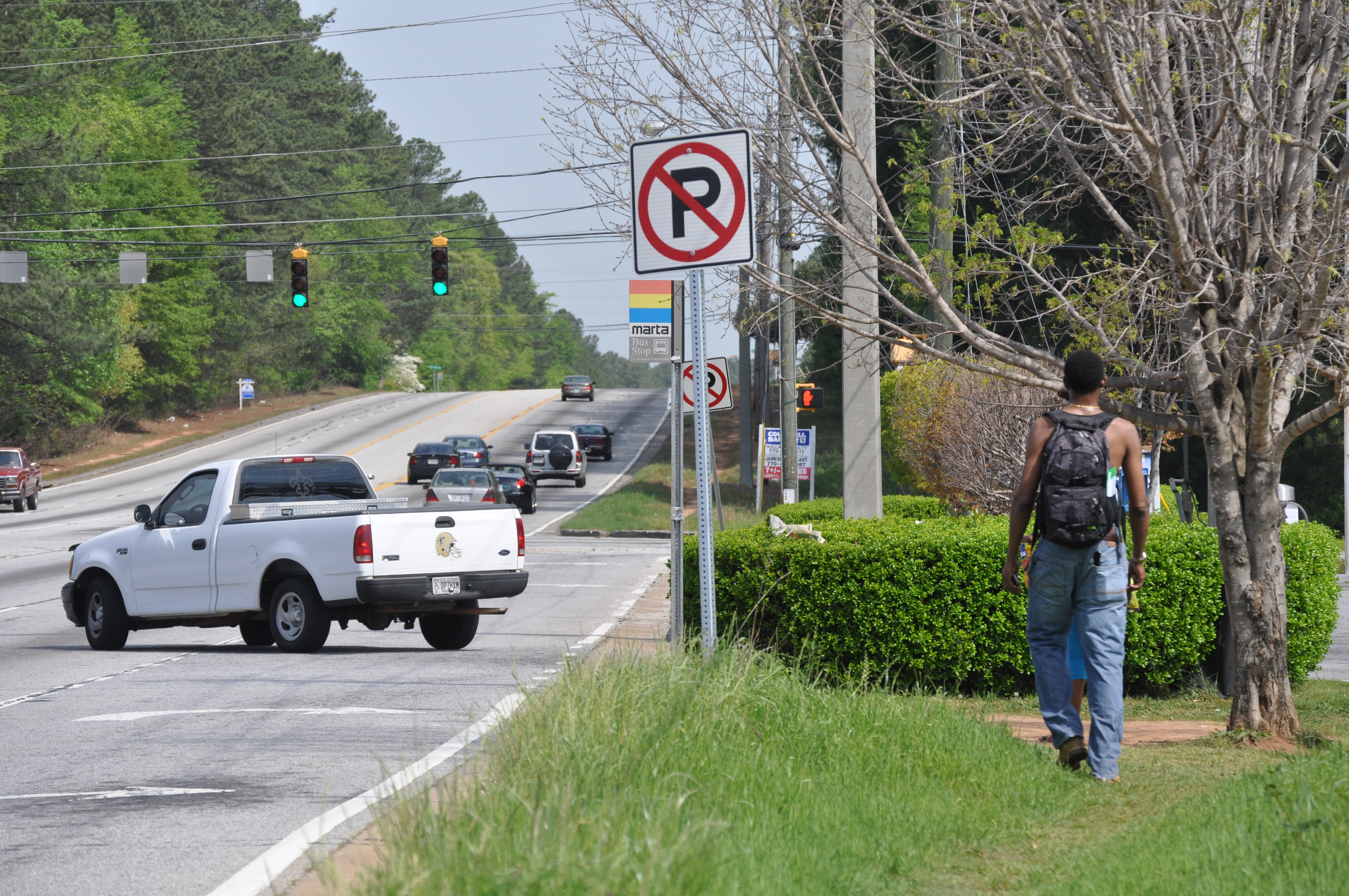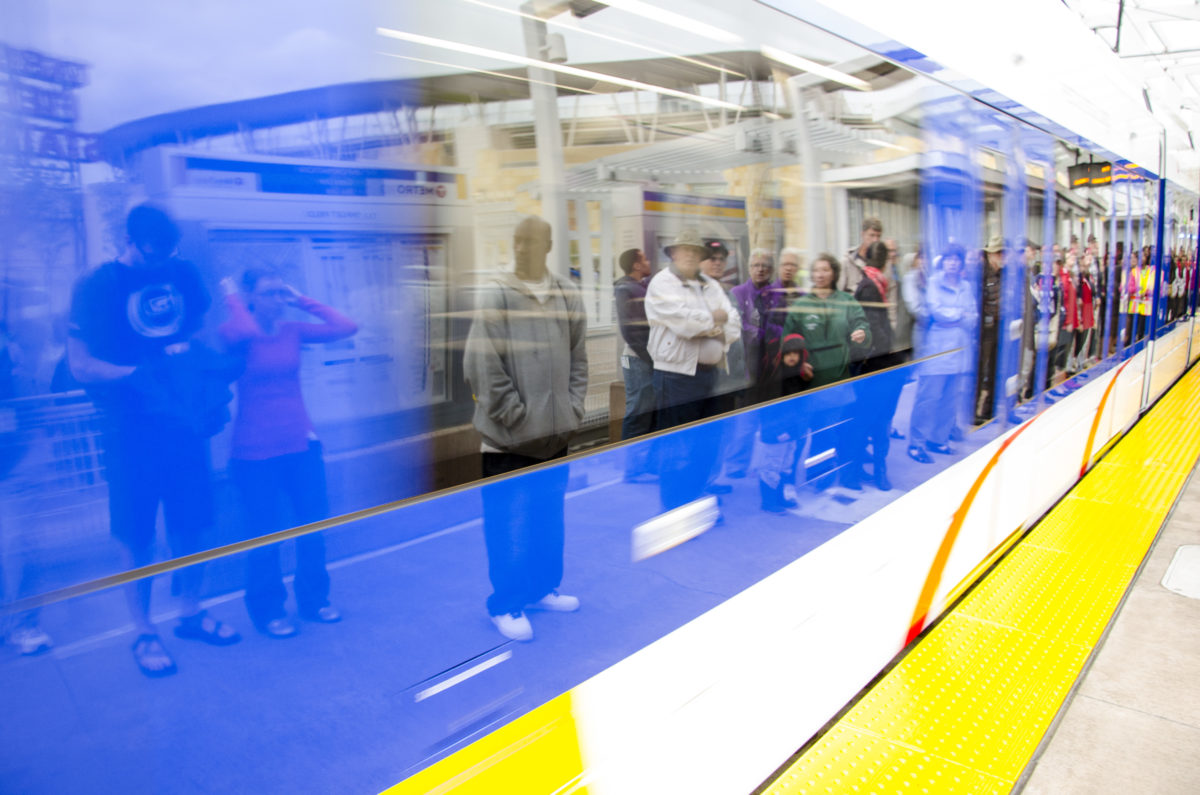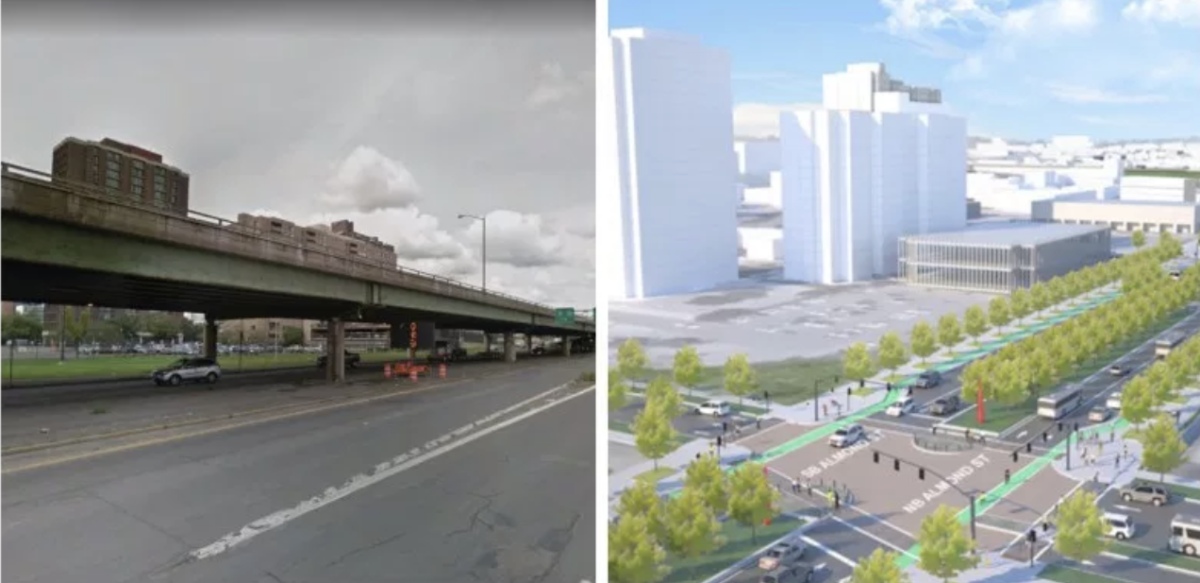
Green New Deal investments should go towards improving transit and pedestrian conditions on dangerous streets
In the context of transit and transportation reform, a just transition could take a few pages from San Francisco MTA’s equity strategy and apply it on a national scale. Unique among US transit agencies, the SFMTA prioritizes transit improvements in disadvantaged communities, rather than distributing funding equally across the city.
Modeled after FDR’s New Deal, the Green New Deal aims to build political support by promising infrastructure projects in every Congressional district. To ensure that a just transition isn’t sacrificed to political imperatives, an equity framework like the SFMTA’s must be applied to the transportation components of a Green New Deal, prioritizing the frontline communities that have borne the brunt of the pollution and disinvestment imposed by highways, but which may not have the most political capital.
Applying an equity lens to the transportation component of the Green New Deal would correct America’s historic bias toward road construction, which spews pollutants into communities of color and forces people into car ownership they can’t afford.
Shifting investment toward transit and walking is better for the planet, and will create huge employment opportunities. Running more buses, constructing and repairing more sidewalks, and building more rail lines in dense, walkable neighborhoods can set us on the path toward a more prosperous and sustainable future shared by all Americans.
American transit agencies have poured public resources into projects that serve areas with outsized political sway, overlooking communities with greater transit needs and more propensity to actually ride transit. Applying an equity lens to project selection can begin to right these historic wrongs – and provide more useful transit in the process.
With this lens, a project like the Utica Avenue Subway in New York City, which would primarily serve people of color in a dense urban corridor, would rise to the top for federal funding. A project like the BQX streetcar, which would primarily serve well-off waterfront residents and generate low ridership, would clearly fail to make the grade.
To dramatically reduce carbon emissions, we’re going to need a lot more transit service. But today, American transit agencies are struggling just to provide the service they’ve scheduled, because they’re not paying operators a competitive wage.
A strategy to dramatically increase operating support for transit — be it through direct federal aid or incentives to increase local funding — must be central to the transportation component of a Green New Deal. This would both produce a surge in new transit operator jobs and give transit agencies the resources to compensate operators with good, competitive wages.
Additionally, in small towns and rural areas across America, transit, paratransit, and medical transportation services are currently provided by volunteer drivers coordinated by small nonprofits. This essential service — the “basic human right” of mobility, in the words of the Community Transportation Association of America — should be a source of middle-class jobs, not left up to charity.
The racist, discriminatory legacy of urban highway construction is exactly the kind of inequity that the Green New Deal should address head-on. A few cities, like Syracuse, are moving to tear down highway segments that tore through black communities and exacerbated segregation. In many more cities, mid-century highways are at the end of their useful lives, and federal incentives could lead local leaders to replace old fossil fuel infrastructure with street grids that reconnect neighborhoods and allow low-carbon modes like transit, walking, and biking to flourish.
American cities including Houston, Atlanta, and Denver have sidewalk construction backlogs in the billions of dollars. At the same time, rising housing costs in cities are pushing lower-income people outside urban centers, where sidewalks are scant. A massive investment in pedestrian infrastructure would allow Americans to walk for short trips, and provide the safe, comfortable connections to transit stops that are absolutely essential for transit to succeed.
Installing curb cuts, raised crosswalks, and other accessibility measures would also ensure that Americans with disabilities can enjoy equal freedom of mobility.
Building sidewalks can even yield more jobs than a cars-only approach. A 2011 UMass Amherst study found that street projects that include pedestrian infrastructure create an average of 10 jobs per $1 million spent, compared to 7.8 jobs for repaving or road expansion projects.
We have one shot to do this right, given the rapid timeframe for decarbonizing our economy outlined by the International Panel on Climate Change. Centering equity within the Green New Deal provides an opportunity to correct the shortcomings of the original New Deal. Applying an equity lens to the transition would result in an infusion of fast, frequent transit and a much safer walking environment that connects hundreds of millions of Americans to opportunities, and to each other.
 On the Brink: Will WMATA’s Progress Be Erased by 2024?
On the Brink: Will WMATA’s Progress Be Erased by 2024?
The experience of being a WMATA rider has substantially improved over the last 18 months, thanks to changes the agency has made like adding off-peak service and simplifying fares. Things are about to get even better with the launch of all-door boarding later this fall, overnight bus service on some lines starting in December, and an ambitious plan to redesign the Metrobus network. But all of this could go away by July 1, 2024.
Read More A Bus Agenda for New York City Mayor Eric Adams
A Bus Agenda for New York City Mayor Eric Adams
To create the “state-of-the-art bus transit system” of his campaign platform, Mayor Adams will have to both expand the quantity and improve the quality of bus lanes. We recommend these strategies to get it done.
Read More
